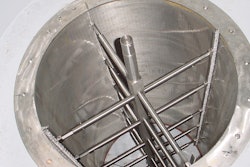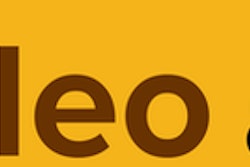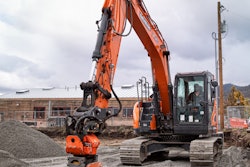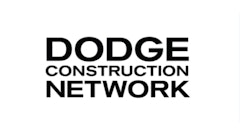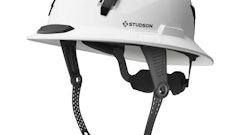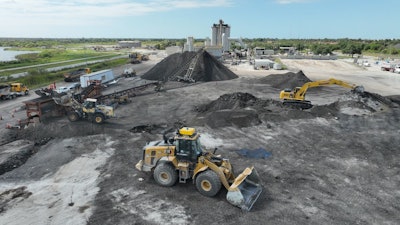
The data revolution is also a revolution in financial clarity and control. As the tools become more and more powerful, there are fewer parts of the industry left to be digitized, quantified, and understood. In today's economic environment, the asphalt plant that has a grasp on the benefits of these tools and utilizes them to their utmost advantage are going to enjoy certain benefits over their competition. I like to think of these as the nickle-and-dime leverages.
Slowly, one by one, every aspect of the plant, materials, quarry, and process are falling into a stricter and more regulated system. Heating systems become electric, insulations are improved, production is more automated, energy losses are found and minimized, pile management and storage reduce back-end inefficiencies, and modern quality controls allow for more precise alterations to mix designs on the fly. 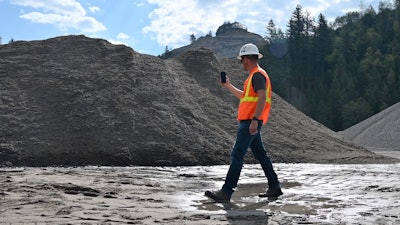 SR Measure
SR Measure
Each one of these, or others, represent a single step improvement that can save you money and/or improve marginal profits in a small but significant way. Independently of each other, they might not make the kind of difference to set one producer apart from their competitor. However, all these technologies, in concert, add up to the kind of competitive advantage that can truly set one company apart from the others in their respective market. On the next horizon for producers, quarries, and crushing-recycling contractors lies major advances in material management.
How to Eat an Elephant
The famous answer to this brain-teaser is, "One bite at a time," but when it comes to the massive growing stockpiles of RAP, stone, gravel, sand, and other stockpiles littered across your site, this method doesn't add up. If you took that approach in our industry, nothing would ever get done in a timely manner. Asphalt contractors, quarries, and crushing companies need accurate information quickly.
For most of the industry's history, the way to know how much you have was just by estimating, and it relied on the experience of the person doing the estimation.
"The rest of the product world has had decades of automation and optimization. Then you step over into the world of bulk materials, and it's back to the stony age, quite literally," said David Boardman, founder and CEO of Stockpile Reports. "The whole industry runs on what I always call hope and heroes. There's an incredible amount of manual effort going into it, and I saw this trillion dollar opportunity, because image processing technology is a perfect fit for it."
Boardman sees the digitization of the industry's countless stockpiles as the first step into a paradigm change for how their management can be transformed in the future.
"If you can digitize all the stockpiles in the supply chain, then you can start optimizing and, eventually, automating," said Boardman. "No matter how good a person is on the ground estimating, eventually, the difference between what's supposed to be there and what is actually there get very far apart. That can lead to catastrophe, like running short on materials at very inopportune times." The variances in tracking perpetual inventories get more pronounced over time.
Stockpile Reports had a Tik-Tok go viral earlier this year of their technology being implemented through the use of an Apple Vision Pro headset, but, thankfully, the tools work on a large variety of platforms. Knowing more about what you actually have in your inventory is a potentially powerful tool, but not everyone has access to cutting edge VR wearables or drones, which can require FAA licenses to operate. 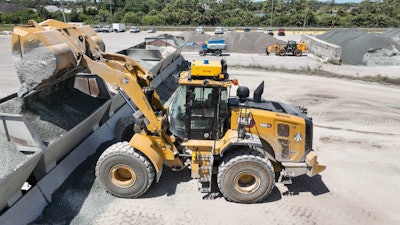 Ajax Paving’s Caterpillar 966XE wheel loader operated with Teleo technology loads their asphalt plant.Teleo
Ajax Paving’s Caterpillar 966XE wheel loader operated with Teleo technology loads their asphalt plant.Teleo
"We are device agnostic. We can take images from just about anything." said Boardman reassuringly.
What really informs how you want to submit the visual data for calculation depends upon your frequency. How often do you want to update the information about what you have in your inventory? Bi-annualy? Quarterly? Monthly? Daily? Real-time?
"What we've noticed over the last four years is that, as people get an appetite and a taste for measurement, they want to do this more often," Boardman reported. "They want to do it once a day. Then they want to do it once an hour, or once every 15 minutes."
They built one of their first constant monitoring system using a pair of stationary cameras that could constantly record and monitor for road-salt stockpiles. However, they've used everything from drones, cable-camera systems like they use for sport events, all the way down to an iPhone 4. In the future, they want to start using wearable technology, adjacent to tools like the Vision Pro or Meta's smart Ray Ban sunglasses, in order to passively collect the visual data.
Currently, a large portion of users and potential users are buying inventory counts for financial valuation, and there is another segment of the market that is starting to buy into faster, cheaper counts for operational use cases. Some asphalt plants have implemented the volumetric technology for their monthly and/or quarterly counts. How does the average customer use this type of volumetric tool? It's kind of shockingly simple to try it out and get started.
"If you're looking to go the manual method [not using stationary cameras systems], you just download the app to a smart phone, use it as you walk around the pile you want to measure, and it automatically computes everything for you," said Boardman. "If you are flying a drone, you would upload the photography to our website. However, if someone wanted the realtime data, we have an online portal to [initiate that process]."
Hands On: Moving Your Materials
Obviously, managing your stockpiles digitally is only one part of the massive equation they represent. At the end of the day, and maybe several times over and over again throughout that day, your stuff still has to get from one place to another. Various loaders, excavators, and other heavy iron, is used to transport sand, recycled asphalt pavement (RAP), other virgin aggregates, and a host of potential things depending on what your plant's scope encompasses.
This can require companies to have multiple well trained operators on hand, and that grows exponentially in cases where an asphalt manufacturer has multiple plant locations. Such was the case with Ajax Paving and their operations in the state of Florida. They have a total of eight manufacturing plants, and they were experiencing the same labor shortages as everyone else across the country.
They've since turned to an unconventional solution to help bridge the gap. Ajax sought out Teleo to retrofit some of their equipment for remote operations with their Supervised Autonomy technology. They installed the tech on new Caterpillar 966XE loaders, stationed about eighty miles apart at two different plants, making Ajax the first in the industry to use remote operations like this at an asphalt plant. This allows for one operator to instantly switch back and forth from Ajax's command center.
From a press release about the innovative approach: 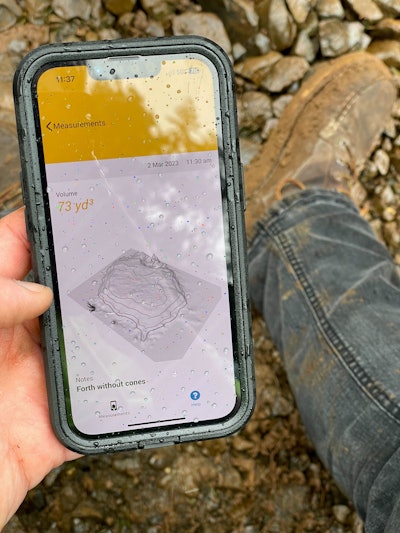 SR Measure
SR Measure
“We’ll be using Teleo at two of our asphalt facilities to remote-operate the loader which feeds the plant,” said Andy DeCraene, executive vice president of operations at Ajax Paving. “This is going to allow us to not only staff the facility with just local folks, but we can do remote working from other places around the state.”
This type of solution potentially helps compensate for labor shortages in other ways too, beyond extending a single operator to more than one location. Teleo emphasizes how this can be a way to attract new candidates to the role of operator who might not have been considered previously.
"Attracting new people is very important to us," said Mark Piotto, vice president of sales at Teleo. "Whether a candidate is physically able to get into a machine or not, this opens the door for some, because they might be able to work in an office type environment. That's an opportunity where we can bring new people into this role to perform these much needed tasks."
And there are additional benefits for all workers when it comes to things like prolonged heat exposure and physical safety.
"Safety is our priority, especially when you got live traffic," said Piotto. "We have obstacle detection, human detection, and collision avoidance technology. We have the safety procedures and processes in our autonomy stack, and that's the beauty of us owning the entire solution. It's, also, way more comfortable, ergonomic, and I think a lot of the old school skeptics were pleasantly surprised with how that additional sensory inputs improved things, like the sound, vibration, and the increased visibility. We actually see underneath the bucket when you're loading the hopper, and there's no blind spots to the left, right, or rear of you. The experience is all customizable."
From the original press release:
“One of the perks of integrating Teleo’s technology is that it takes operators out of the cab, making their lives easier,” said Ajax Paving President Vince Hafeli, a vocal advocate for mental health in the construction industry. “By removing the physical aspects of doing this job, the mental demand automatically decreases. It’s a welcome benefit of the technology.”
The good news for plant managers and owners is that, unlike built-in brand specific solutions, Teleo can be adapted to almost any equipment situation.
"It's a brand agnostic solution. Any loader, any make, any model, and we've done loaders with 10,000 to 11,000 hours on them, as well as brand new loaders," Piotto said. "The retrofit kit can go from machine-to-machine. The wiring harnesses are specific to the machine model, but our kit is truly universal."
Staying Safe: Dealing With Digital Communication
Everyone has had experiences when their cell phone dropped a call, a Zoom meeting froze up, or their home WiFi router suddenly stopped working, but in those cases you're not in the middle of carrying a few ton of stone. What happens if there's an interruption of service on either end of the remote connection?
"We communicate from the machine via WiFi mesh network that is our own software and hardware," Piotto explained. "And we have multiple watchdog [systems] that are in the roof mounted machine kit that are constantly looking at whether or not we've got Internet, multiple times in milliseconds, to ensure we have all of the things that we need to run."
And it's not just looking for disconnections, even if the internet connection is intact, but slowly down past a certain point, it can trigger the safety fail-safe.
"Machine latency is very important for us, because when you're traveling at fifteen miles an hour, it might not sound like a lot, but it is," Piotto continued. "If our system detects that we are beyond a certain threshold than what we've requested, we will bring that machine to a safe stop. Safety is our number one priority."
How Volumetrics Comes Back Into Play
There's a marriage waiting to happen between these two material management solutions. Mastering the data side of your stockpiles, and then autonomously and/or semi-autonomously managing the physical piles themselves. The power to know what you have, at all times, and being able to take it where it needs to go, and track usage rates and costs more efficiently and accurately than ever before. Someone will be the first to the table, and once they show how much it's benefitted their bottom line, it will surely start to spread.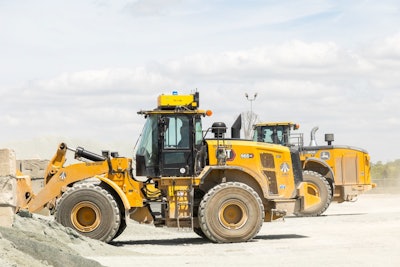 Caterpillar 966XE wheel loader equipped with Teleo Supervised Autonomy at an Ajax Paving asphalt plant.Teleo
Caterpillar 966XE wheel loader equipped with Teleo Supervised Autonomy at an Ajax Paving asphalt plant.Teleo
"There's so much wasted energy and effort," lamented Stockpile Reports' Boardman. "Moving material around and around, moving it incorrectly, and moving it multiple times. Just reducing those wasted efforts would have a measurable impact optimizing the whole process. It's crazy how much waste there is. It's not because people want to do it that way, it's because they don't have the information. They don't have the data."
LiDar measurements have been considered the industry gold-standard, but the photogrammetry Stockpile Reports uses has been verified by third parties to be within 1.6% margin of LiDar. Measurements based on GPS sticks are, on average, within 6% of laser scanners. And what Boardman refers to as "Beerbelly technology" can get to within 5% accuracy just by guessing, however, that is only when a stockpile is within 3,000 cubic yards.
"As soon as you exceed 3,000 cubic yards, the human estimation only averages between 12-15% of laser scanning," explained Boardman. "If you got a bunch of small piles and you just need to guess once a week, great, just do that. But if you need you know something much more accurate, much more precise, and much more often then you probably need to start looking at lasers or photogrammetry. At that point, cost becomes cost becomes a factor, and that's why we're a big believer in the smart phone method. Because you've already got one in your pocket."




